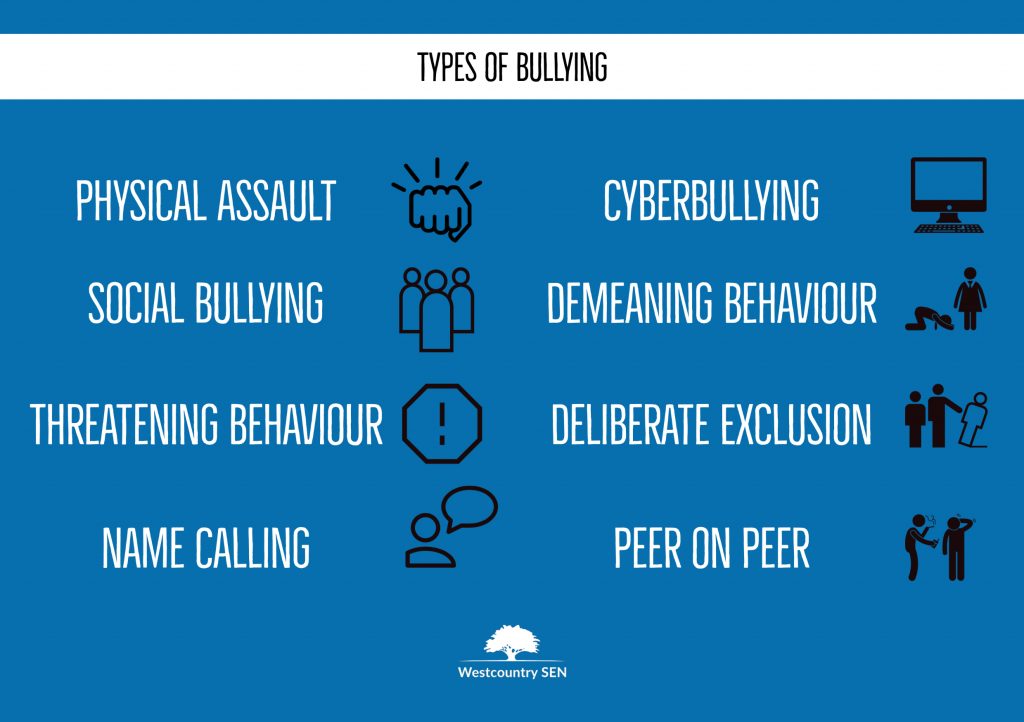Bullying and Cyber Bullying
There is no legal definition of bullying, but we probably all have a good idea of what it is. Generally, it is seen to be repeated actions or behaviour which is intended to cause emotional or physical harm to others. Often bullies target people because of gender, race, sexual orientation, appearance, disability or religion. But, sometimes, bullying can be for what appears to be no reason. Peer pressure, the need to belong, lack of self-confidence can all be elements of bullying.
Like most of the abuses you have been reading about, it is more likely that a child will only disclose bullying to someone they have a trusting relationship with. Bullying can often occur in school and affect learning and educational confidence. Therefore a 1:1 tutoring situation may provide an opportunity for the child to talk about bullying.
Witnessing bullying can also be distressing for a child. Schools encourage an ‘upstanding and not bystanding’ approach, but this can be a challenge for many children. Disclosure of a witness of bullying should also be treated seriously.
Most children will tell you that they don’t want anything to be done because they fear that the bullying will worsen. Reassure them that bullying is always wrong and never the victim’s fault and that telling someone is the first step in stopping this behaviour.
What to do
- Listen actively to what you are being told.
- Reassure the child that they are doing the right and brave thing in telling you.
- Reassure the child that bullying is something that should not be tolerated
- Report to the DSL
Types of bullying
Bullying can take many forms, including:

Peer on Peer
This term refers to the violent or coercive behaviour of children on children. Schools now have a statutory duty to investigate and report incidents that involve sexual offences and/or violence, and these incidents will be dealt with by a multi-agency approach.
Peer on peer abuse can be difficult to detect as much of it is away from adult eyes. It can include, amongst other abuses:
- Physical and sexual abuse, harassment and violence
- Emotional abuse
- Physical and online bullying
- Teenage relationship abuse
- Sexual grooming
Cyberbullying
This term refers to any behaviour which threatens or demeans a victim online. With most children we teach now having access to online platforms and the internet being a constant companion, cyberbullying is rife. It is no good wishing for a pre-mobile existence. They are here to stay, and whether we like it or not, children and young people live their lives through their mobiles.
As with all bullying, issues of cyberbullying are varied.
Examples of cyberbullying
- Spreading rumours or gossip
- Cyberstalking
- Outing (the sharing of personal or intimate information about a victim)
- Flaming (the deliberate use of abusive language in posts to upset a victim)
- Impersonation/hacking
- Denigration (the use of false information/images to ridicule a victim)
- Harassment
- Exclusion
- Blackmail
- Grooming (or sexual manipulation)
- Inappropriate images (including sexting/sharing nudes which is illegal if you are under 18)
- Threatening behaviour
Anyone using the phone system or the internet to deliberately cause harm or distress may be committing an offence.
Further information
CEOP (The Child Exploitation and Online Protection Centre) investigates allegations of online abuse and cyberbullying.
Dorset police also provide information about online bullying.
Quiz
Don’t worry if you do not get all the answers to this quiz correct the first time. Your score does not affect your overall assessment mark but do ensure that you go back to see the correct answer if you do get any wrong.